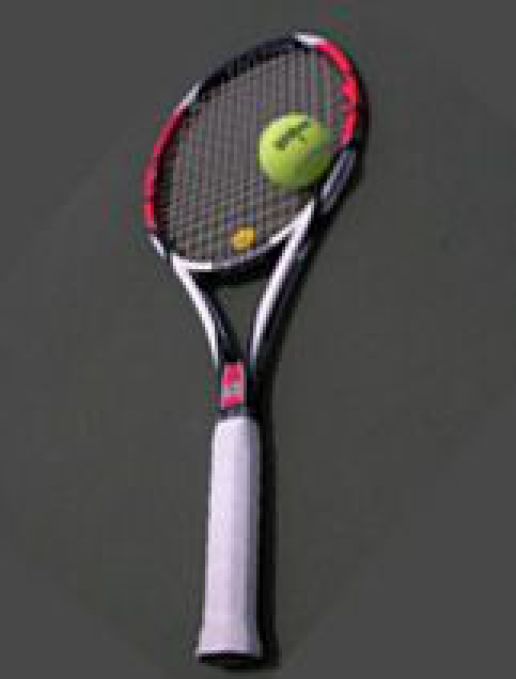
Once upon a time
The first chapter in the history of tennis sees Jeu de Paume, a French game, and as the name implies, played without rackets. The players first hit the ball with their bare hands and then used leather gloves.
By the 1490s, the gloves began to be reinforced with what was the ancestor of the tennis string. What was recognisable as the first real racket was born at the beginning of the 16th century. Made of ash, it had a long handle and a frame strung with sheep gut.
A beautiful baby: 400 grams and 66 centimetres!
Aristocrats with rackets, not muskets
After the French revolution, deprived of aristocratic players, Jeu de Paume emigrated to Great-Britain and a short century later, the game had become the “lawn tennis” recognisable today.
Whilst Kings Henry VIII of England and Francis of France had the resources to pay for the latest in rackets, the main challenge of making tennis accessible to more people was the issue of the strings. A single racket needed 100 metres of catgut to be complete.
How many dead animals does that equate to? Not a single cat, but many oxen and sheep.
For catgut is not what it seems to be. It was first made by a British surgeon, Lister, out of beef membrane and the small intestines of sheep.

Rackets whistle a different tune
By 1875, racket manufacturing had become a business with serious opportunities and a British manufacturer decided to look overseas for opportunities to expand. He met a cello string manufacturer named Babolat in Lyon. They married, diversified from the world of music to that of tennis and were happy ever after with numerous baby racket descendents.
Since then, Babolat has become a major name and the rackets produced today have become both a lot lighter and much more powerful.
In 1930, new glues were invented, with which it was possible to manufacture multilayered rackets made of different woods: ash, walnut, beech, maple…
Improvement came in terms of string tension, which increases the balance between strength and control.
Matter of materials
 In the 1970s, French engineer and tennis champion, René Lacoste, produced a steel-based racket with which American Jimmy Connors won his greatest victories.
In the 1970s, French engineer and tennis champion, René Lacoste, produced a steel-based racket with which American Jimmy Connors won his greatest victories.
Steel had a small role in the history of tennis because just a decade later, reinforced plastics and composites had arrived to bring new opportunities to the business of racket manufacture, giving players a lightness unheard-of before and introducing a new chapter of high performance levels.
Did you even see the ball ?
 Andy Roddick has the fastest serve ever: 249km/h, a record no one has broken since 2004.
Andy Roddick has the fastest serve ever: 249km/h, a record no one has broken since 2004.
Among women, US player and champion, Venus Williams, reached 205 km/h in 1998.
How do these people manage to reach such speeds with rackets that hardly weigh 300 grams?
How do Nadal and Federer even manage to return these balls that travel so fast?
Well, of course, the answers are both amazing talent and technique.
The former is specific to the player but the way rackets are made certainly helps with technique.
Racket Serving speed Precision
Wooden 170km/h 41,6%
Steel 175km/h 50%
Composite plastic 185km/h 62%
According to a survey by Spanish MDs Guillermo Ruiz Llamas and Dolores Cabrera Suárez for the ‘Scientific and Cultural Association for Teaching Physical Activities and Sports’, composite plastic rackets increase the success of serves by 20% compared to those performed with metal rackets.





